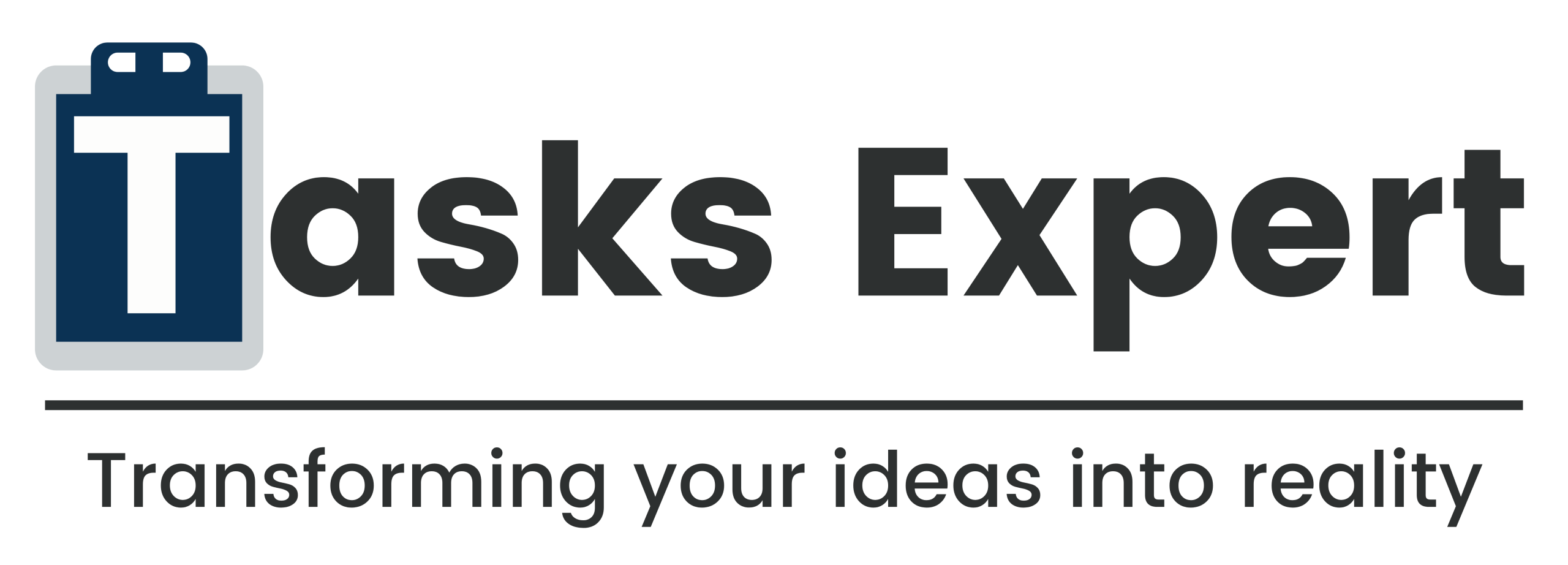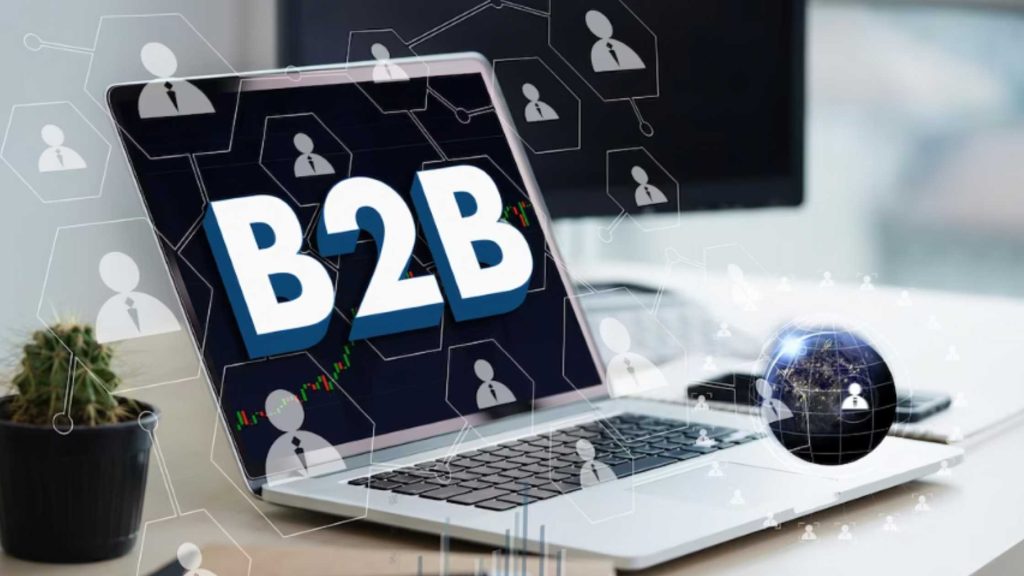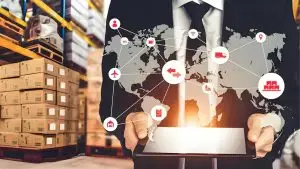Introduction
Your site is usually the first impression you give to a prospective client, and in the B2B space, that has to be customized. Why? Because each visitor is at a different stage in their buying journey. A CTO browsing automation tools casually isn’t seeking what a procurement lead about to sign up a vendor is looking for. That’s where B2B website personalization is essential.
Personalizing your B2B business site involves changes from name changes to adding a logo. It’s about molding content, adding calls to action, and even page layout to fit where a person is. Their buying process involves awareness, consideration, and decision. Done correctly, personalization leads visitors naturally toward conversion by providing them with exactly what they require, when they require it.
Here in this blog, we will deconstruct how to personalize every phase of the B2B process with smart, scalable strategies. If you’re launching a new B2B corporate site or optimizing an existing one, these strategies will set you up with messaging that aligns with actual buyer intent and advance leads with confidence.
Awareness Stage: B2B Website Personalization for Curiosity and Discovery
The awareness stage is where your relationship with a potential buyer begins. Visitors are at this stage only beginning to investigate a challenge or opportunity; they’re asking general questions, conducting superficial research, and attempting to make sense of alternatives. They don’t want sales pitches, product explanations, or comparison tables. What they do want is clarity, context, and a reason to believe.
This is where B2B website personalization comes into play. The more your content sounds like it addresses their industry, role, or challenge, the more engaged they will become.

Here’s how to tailor your B2B Website Personalization for experience at this early stage:
1. Serve industry-specific content
Use IP-based data to display relevant resources, like showing manufacturing case studies to visitors from industrial sectors or legal trend reports to law firms. It creates immediate resonance.
2. Use broad, educational CTAs
Skip the “Book a Demo” and focus on lower-commitment offers like “Explore 2025 Market Trends” or “Download Our Industry Guide.” These help you collect intent signals without overwhelming the visitor.
3. Simplify navigation for new users
Highlight your blog, explainer videos, or learning hubs prominently. New users need orientation, not product features. Remove friction by making your best educational content easy to find.
4. Create landing pages based on entry intent
If users frequently arrive through search terms like “What is supply chain automation?” build a content-rich landing page with clear language, helpful visuals, and a soft CTA to explore more.
Above all, your job here is to act as a helpful guide. When someone lands on your B2B corporate website for the first time, they should feel understood, not sold to. B2B Website Personalization at this stage should say, “We’ve helped people like you before, and we’re here to help you too.”
Consideration Stage: B2B Website Personalization for Research and Comparison
They already have an idea of what issue they’re trying to fix by the time a visitor arrives at the consideration phase. Now they’re considering choices, contrasting solutions, reviewing vendors, and determining what suits their team best. This is your chance to differentiate by presenting solutions for actual-world issues.
This is where B2B website personalization comes in to convert passive interest into qualified intent. You get more compelling by personalizing your message to their industry, use case, or role.

Here’s how the B2B Website Personalization helps for consideration-stage visitors:
1. Surface solution-specific content
Display relevant use cases, case studies, or detailed product walkthroughs depending on browsing behavior or segmented trips. For example, if a visitor has already downloaded a guide on automation in logistics, display a logistics-centric success story to them next. It should be intuitive, not random marketing.
2. Offer mid-funnel CTAs
Calls to action like “Compare Solutions,” “Download the ROI Calculator,” or “See the Platform in Action” work best here. These CTAs help the visitor evaluate without pressure, and show that you respect where they are in the process.
3. Use dynamic testimonials or recognizable logos
Personalize social proof by industry or region. If your platform helped a well-known university or finance firm, highlight that when someone from a similar background visits. It builds credibility quickly and naturally.
Allow visitors to filter content by role—such as CTO, Ops Manager, or Procurement Lead—so they may find insights addressing their particular goals and concerns. This is particularly effective on product pages and solution summaries.
In this stage, your B2B Website Personalization should facilitate trust, comparison, and clarity. You’re not only demonstrating what your business does—you’re assisting visitors in constructing a strong argument for why they should choose you over all others.
Decision Stage: B2B Website Personalization for Conversion
At this point, your visitor has done the research. They’ve read the comparisons, looked at competitors, and explored different approaches. Now, they’re close to making a decision, and your job is to make that final step feel like the obvious one. This is where strong, well-placed B2B Website personalization turns interest into action.
When someone reaches the decision stage, what they need is confidence. They’re asking: Can I trust this company? Will they deliver? Is this going to be easy for me to get started with?
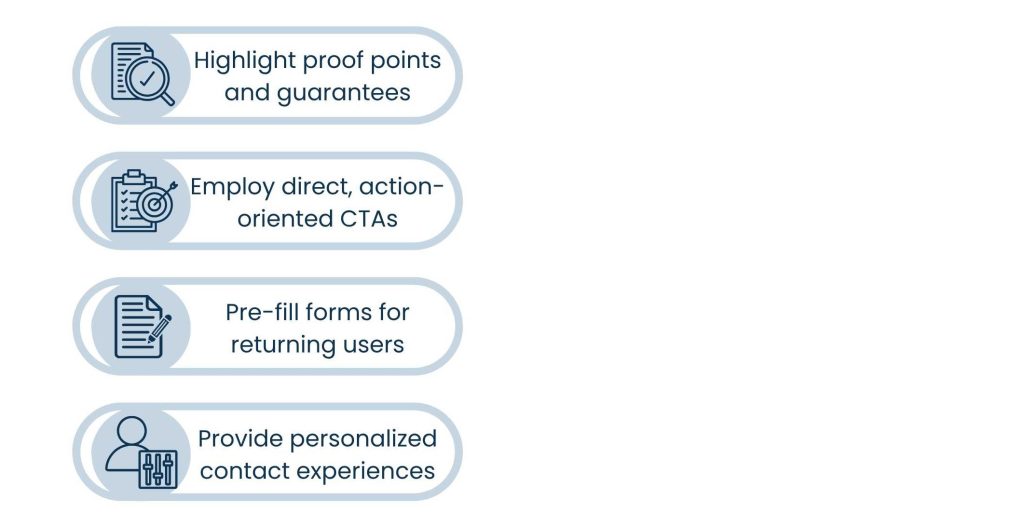
Here’s how B2B Website Personalization answers those questions clearly:
1. Highlight proof points and guarantees
Show real-world results. Employ dynamic banners to build trust indicators such as your NPS score, ISO certifications, compliance details, or industry awards. With flexible contracts, onboarding support, or guaranteed satisfaction, highlight that on critical pages.
2. Employ direct, action-oriented CTAs
Adding ideal CTAs like “Book a Call,” “Start Your Free Trial,” or “Get a Custom Quote”. These should not just be displayed at the end of pages, but also in headers, product sections, and exit. Intent pop-ups anywhere they’re most visible without interrupting flow.
3. Pre-fill forms for returning users
Avoid requiring visitors to reenter their information if they have already received a whitepaper or signed up for a webinar; improve auto-fill
4. Provide personalized contact experiences
Using information from past interactions, industry, or region, direct visitors to the relevant account manager or specialist. Make it appear as though a human is waiting to help if it’s a scheduling tool, chatbot, or live representative. Making the “yes” feel natural is the goal at the decision stage, not increasing sales tactics.
Account-Based Marketing Personalized Landing Pages
Generic landing pages won’t work even for high-value accounts. That’s why B2B website personalization and ABM are synonymous. The likelihood that a certain account or group will stay, engage, and convert increases with the personalization of your messaging, graphics, and offers.
Determine which marketing parameters, such as industry, job function, business size, or region, are most important first. These traits will guide each custom landing page’s content and design. For instance, a page for enterprise IT leads in fintech would be quite different from one for mid-sized health operations teams.
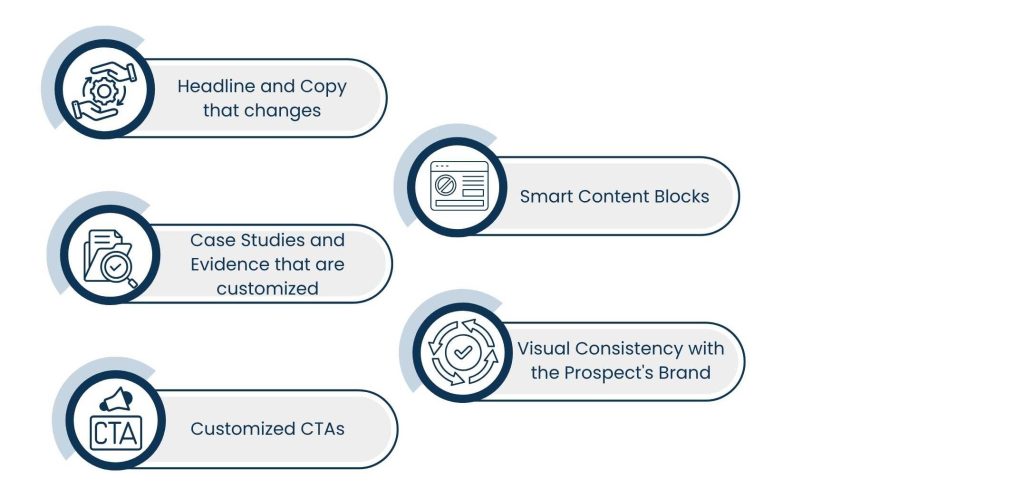
Consider the following effective methods to personalize ABM landing pages:
1. Headline and Copy that changes
Employ company name or industry-specific pain points within the headline. For instance: “How [Company Name] Can Optimize Logistics in 60 Days.”
2. Case Studies and Evidence that are customized
Display relevant client success stories or testimonials from the same industry. It establishes instant credibility and relevance.
3. Customized CTAs
Replace a generic “Talk to Sales” with “See How We Assisted [Industry] Teams Reduce Costs” or “Schedule a Strategy Call for [Their Segment].”
4. Smart Content Blocks
Applications such as HubSpot or Mutiny enable you to show various messaging, images, and promotions depending on firmographic information. This enables you to deliver highly targeted content without creating alternate pages per segment.
5. Visual Consistency with the Prospect’s Brand
A tasteful application of colors, logos, or common language can provide a sense of familiarity and relevance without going too far.
The objective with ABM personalization isn’t to make it overly complicated; it’s to cause the prospect to believe that your site was created specifically for them. When executed effectively, these custom landing pages heat up cold clicks into warm conversations.
Conclusion
It’s not only a nice-to-have, but rather how companies today connect with buyers where they are. When you personalize your B2B business site by tailoring your content and message to each step in the journey, you naturally guide users from curious to converted. You’re not only creating pages, you’re creating trust.
Each stage necessitates a distinct tone, offer, and quantity of information: awareness, deliberation, and conclusion. With technology that separates audiences, tracks activity, and responds immediately, your website goes from being informational to being actionable.
Keep in mind that you don’t have to completely revamp your website.
About Us
Tasks Expert offers top-tier virtual assistant services from highly skilled professionals based in India. Our VAs handle a wide range of tasks, from part time personal assistant to specialized services like remote it support services, professional bookkeeping service etc. Furthermore, it helps businesses worldwide streamline operations and boost productivity.
Ready to elevate your business? Book a Call and let Tasks Expert take care of the rest.




